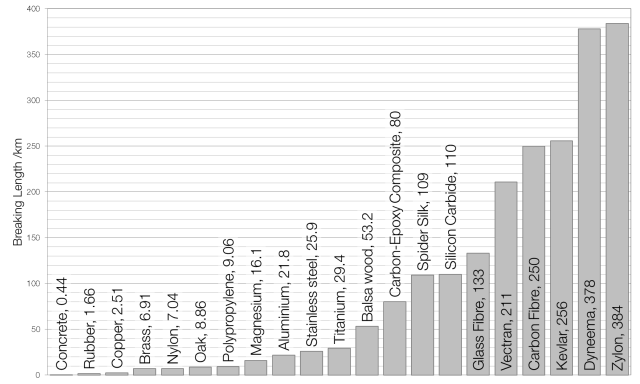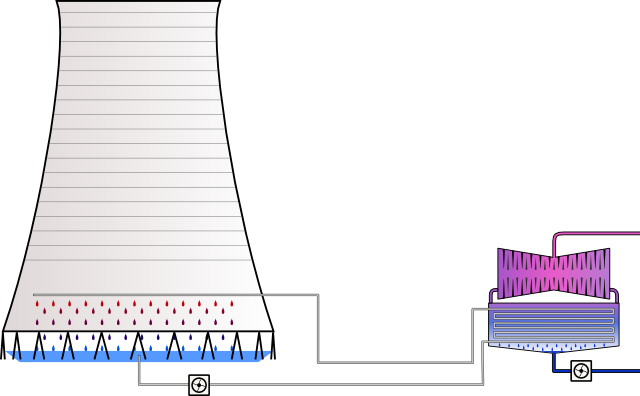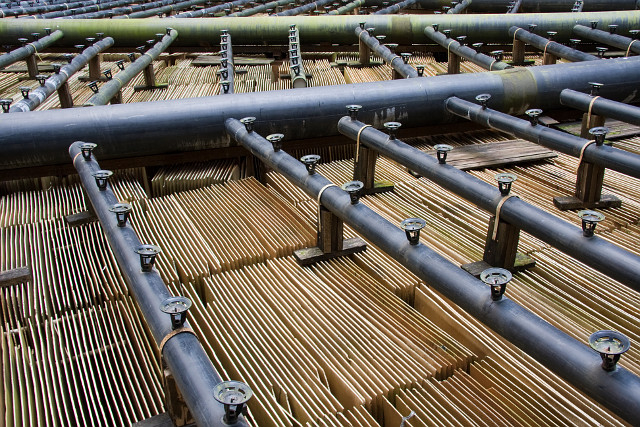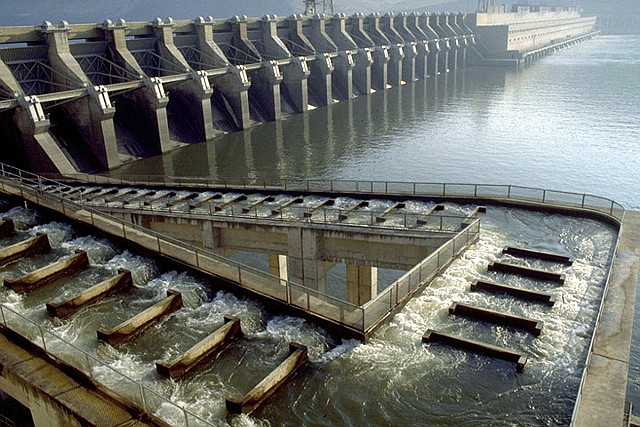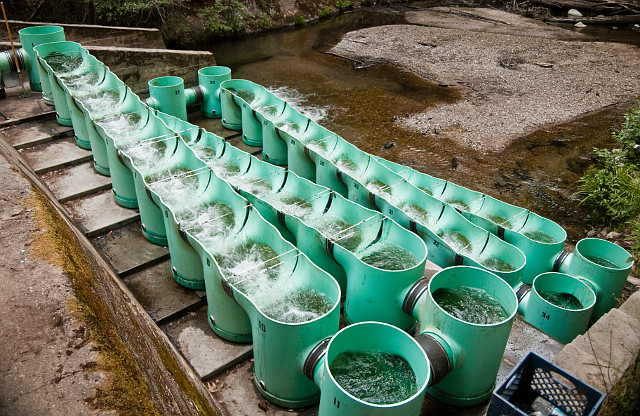Breaking length (also called self-support length) is a way of measuring the strength of a material; it is the maximum length of a column of a material that can support its own weight if it is anchored only at the top. For example, the breaking length of concrete is 0.44 kilometres, which means that if you constructed a 440-metre long column of concrete you could hang it from its top and it would support its own weight, but a 441-metre long column would break.
As you might expect, the top end of the list is dominated by materials that have been specially engineered for strength:
- Zylon is used in the manufacture of tennis racquets, seat belts and even the Spirit and Opportunity Mars rovers.
- Dyneema, made of ultra-high-molecular-weight polyethylene fibres, is used in body armour, bow strings and climbing equipment
- Kevlar is famously used in body armour, but is also used in racing boat sails and motorcycle safety clothing.
- Carbon Fibre, when used to reinforce polymers, is used in Formula One cars, boat hulls and bicycle frames.
